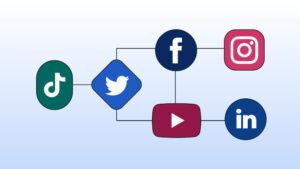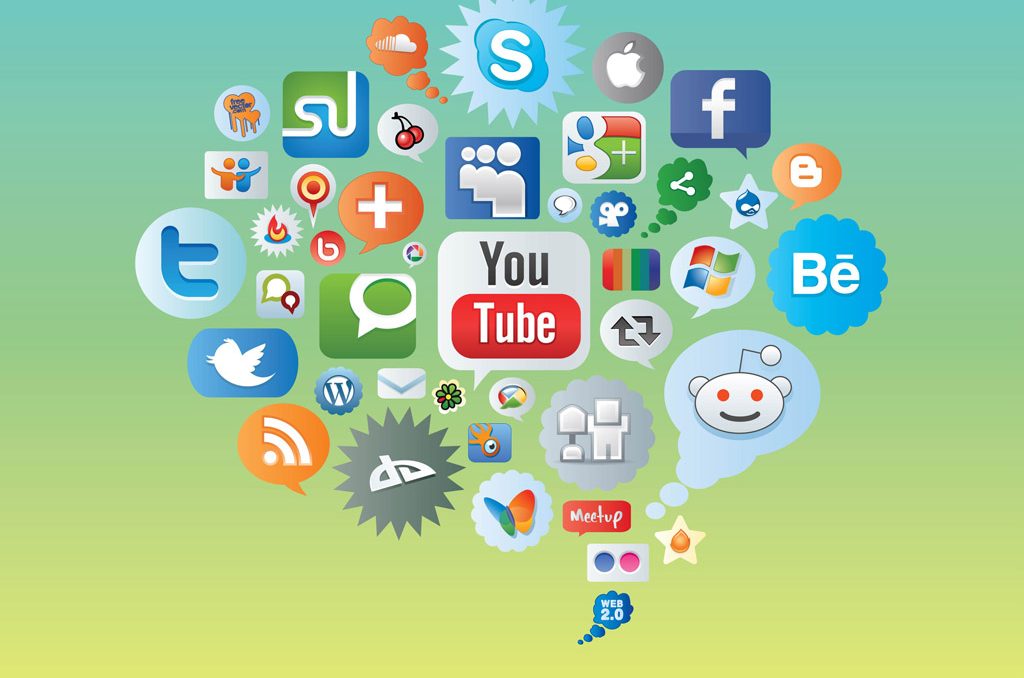Social media has come a long way since its inception, with platforms evolving to meet the changing needs and preferences of users. The journey began with platforms like Friendster, which introduced the concept of connecting with friends online. In those early days, the internet was a space for simple profiles and basic interactions. Friendster, a pioneer, paved the way for future social media giants.
Over time, platforms like MySpace and Hi5 entered the scene, introducing new features such as customizable profiles and the ability to share multimedia content. These additions marked a shift towards more personalized and visually engaging online experiences. Users could now express their personalities through the design of their profiles, fostering a sense of individuality in the digital realm.
The subsequent emergence of Facebook was a game-changer, setting new standards for social connectivity. Its exclusive college-based approach and emphasis on real-world connections provided a unique social environment. The platform’s widespread adoption signaled a shift in the social media landscape, influencing the development of subsequent platforms. It has become a platform for practicing good habits and socializing such as activities in joint sports with combat clothing.
The Mobile Revolution: Twitter and Instagram

As smartphones became ubiquitous, social media adapted to the shift in user behavior. Twitter, with its succinct microblogging format, became a platform for real-time information sharing. The 140-character limit encouraged concise yet impactful communication, giving rise to trends like hashtags and retweets. This bite-sized approach to content delivery marked a departure from traditional long-form communication.
Simultaneously, Instagram transformed social media into a visual spectacle. Focused on photo and video sharing, it appealed to users’ visual sensibilities, fostering a culture of aesthetics and creativity. Influencers emerged, leveraging the platform to showcase lifestyles and build personal brands. The combination of Twitter’s brevity and Instagram’s visual appeal expanded the scope of social media, catering to diverse user preferences.
The Era of Video: YouTube and TikTok
With internet speeds increasing, video content gained prominence. YouTube became a powerhouse for long-form videos, offering a platform for creators to share in-depth content. The rise of vlogging, tutorials, and entertainment channels transformed the way users consumed information. YouTube’s algorithmic recommendations personalized content discovery, enhancing user engagement.
TikTok, on the other hand, disrupted the traditional content creation model. Its short-form videos, often set to music, captivated users with quick, entertaining snippets. The platform’s algorithm prioritized content discovery, making it a breeding ground for viral trends. TikTok’s success highlighted the growing appetite for dynamic, easily digestible content in the evolving social media landscape. As part of these short videos, users can show the good sides of famous places, such as what can be gained from a treatment at a luxury spa in Toronto.
The Metaverse: Social Media’s Next Frontier
As technology advances, the concept of the metaverse has emerged, representing a collective virtual shared space. Social media is once again at the forefront of this evolution. Platforms are exploring immersive experiences, blurring the lines between the physical and digital worlds. Virtual reality (VR) and augmented reality (AR) are becoming integral components, offering users unprecedented levels of interaction. In this way, filmmaking courses gain new limits of their possibilities, opening an incredible world of creativity to their participants.
Metaverse platforms aim to redefine social connectivity by providing virtual spaces for socializing, working, and entertainment. Users can engage in activities beyond traditional social media interactions, such as attending virtual events, exploring digital landscapes, and even creating virtual economies. The metaverse represents a paradigm shift in how we perceive and engage with social media, transcending the limitations of conventional platforms. We can get lost while browsing some of those platforms and snacking on delicious milk chocolate edibles, forgetting about the time.
The Integration of Artificial Intelligence in Social Media
Looking forward, the integration of artificial intelligence (AI) is poised to revolutionize social media in unprecedented ways. Machine learning algorithms are becoming increasingly sophisticated, allowing platforms to analyze user behavior and preferences with remarkable accuracy. This data-driven approach not only enhances content recommendations but also enables personalized user experiences. An Internet provider that manages IT services in San Antonio provides its users with an Internet with the help of which they can integrate AI technologies into their media, thus making them more interesting and attractive to the general public.
AI-powered chatbots are another facet of reshaping social interactions. These automated assistants facilitate instant responses to user queries, improving customer service and engagement. As these systems evolve, they contribute to the seamless integration of social media into various aspects of daily life, from shopping to accessing information.
Moreover, AI’s role extends to content creation. Generative models can produce text, images, and even videos, opening new possibilities for creativity and expression. This automated content generation introduces a novel dynamic, where AI becomes a collaborative partner in the creative process. The interplay between human creativity and machine-generated content is likely to redefine the boundaries of digital expression. Media with AI-integrated content are spread by Google ads because they are more interesting to the general public and the audience enjoys this symbiosis of human creativity mixed with machine capabilities, but if your Google ads are suspended, contact a professional to solve the problem.
Niche Communities and Micro-Influencers
While major social media platforms cater to broad audiences, there is a rising trend toward niche communities and micro-influencers. Specialized platforms are emerging, focusing on specific interests, hobbies, or professional networks. These communities foster more intimate connections among users who share common passions, deviating from the mass appeal of mainstream platforms. The health clinic in Marietta GA contributes to groups formed between patients suffering from chronic diseases because it helps them share advice and feel better, but it is definitely important to go to the doctor’s examination first.
Micro-influencers, individuals with smaller but highly engaged follower bases, are gaining prominence. Their authentic and relatable content resonates with niche audiences, leading to higher levels of trust and interaction. As social media continues to diversify, these micro-communities and influencers are contributing to a more decentralized and personalized digital landscape.
Interactive Content: Gamification and Polls

The future of social media lies in interactive content, blurring the lines between passive consumption and active engagement. Gamification elements, such as quizzes, challenges, and interactive stories, are becoming integral to platforms seeking to enhance user participation. These features transform the user experience into a more immersive and dynamic journey. In this way, platforms such as Readathon school fundraisers become more interesting to young people while introducing them to reading and education systems.
Polls and surveys are emerging as powerful tools for real-time feedback and audience engagement. Users enjoy the opportunity to express their opinions, influencing content direction and fostering a sense of inclusivity. As social media evolves, the integration of interactive elements is likely to become a standard feature, shaping the way users interact with content and each other.
Blockchain Technology: Ensuring Transparency and Security
The incorporation of blockchain technology is addressing some of the longstanding challenges in social media, particularly concerning transparency, data ownership, and security. Blockchain enables decentralized and tamper-resistant data storage, giving users greater control over their information. Smart contracts further enhance transparency in advertising and partnerships, mitigating issues such as fake followers and fraudulent activities. Companies that offer their services in promotion as Colorado Springs SEO companies that do an excellent job of marketing their clients, must offer absolute security and protection to their clients.
Decentralized social media platforms, built on blockchain principles, are gaining traction. These platforms prioritize user privacy and data ownership, offering an alternative to traditional, centralized models. As concerns over data security and privacy continue to mount, blockchain technology presents a promising solution for reshaping the foundations of social media. What we can notice today is that our data is very accessible which can sometimes be useful, like when through good advertising you find a great emergency restoration service in Charlotte right when you have a problem with your pipes.
Cultural Impact: Redefining Digital Expression
Social media has become a powerful medium for cultural expression and activism. From the Arab Spring to global movements like #BlackLivesMatter, social media has played a pivotal role in amplifying voices and catalyzing change. As platforms evolve, there is a growing recognition of their impact on shaping cultural narratives and influencing societal norms. Business lawyers from Dubai support these changes saying how they affect various social issues and how clients can consult with them for a real view of the situation.
New forms of digital expression, such as virtual protests and online art movements, are emerging. The metaverse, with its immersive capabilities, provides a canvas for digital artists to create interactive experiences that transcend traditional boundaries. Social media’s cultural impact is evolving beyond mere communication; it is becoming a catalyst for societal reflection and transformation. The way these movements work is also great for promoting things like smoking accessories that are a healthier option for both the individual’s health and the environment.
Augmented Reality: Enhancing User Experiences
Augmented reality (AR) is poised to enhance social media interactions by overlaying digital elements onto the physical world. Snapchat’s AR lenses and Instagram filters are early examples of how AR is integrated into social media for entertainment and self-expression. As AR technology advances, users can expect more sophisticated and interactive augmented experiences, further blurring the lines between the virtual and real. The use of AR can also be integrated for other purposes, such as an excellent virtual tour of homes in Boca Falls to provide prospective owners with an initial impression.
Imagine attending a virtual concert where AR technology brings the performance into your living room, creating an immersive audio-visual experience. The integration of AR in social media not only transforms how we consume content but also opens new avenues for creative expression and shared experiences.
The Future Workforce: Social Media and Professional Networking
Beyond personal connections, social media is evolving into a crucial tool for professional networking and career development. Platforms like LinkedIn have established themselves as essential resources for job seekers, recruiters, and professionals looking to expand their professional circles. The integration of features such as virtual job fairs and professional development courses further cements social media’s role in shaping the future workforce. Science tutors from Boulder teach their students by educating them to use such platforms as well as to acquire the necessary knowledge for later employment.
As remote work becomes more prevalent, social media platforms are adapting to facilitate virtual collaboration and networking. From virtual co-working spaces to industry-specific forums, social media is becoming a central hub for professionals to connect, share insights, and explore career opportunities.
Ethical Considerations in AI and Data Usage
The increasing reliance on AI in social media raises ethical concerns regarding data usage, bias, and algorithmic transparency. Striking a balance between leveraging AI for enhanced user experiences and ensuring responsible data practices is paramount. As AI algorithms shape content recommendations, there is a need for transparency in how these systems operate and the ethical considerations involved in their development. Choose the right and reliable ways to protect yourself online, but at the same time, consider installing an access control system from Philadelphia so that you can feel safe in your home.
Issues of algorithmic bias, where AI systems inadvertently perpetuate societal prejudices, require careful consideration. Stricter regulations and ethical frameworks are essential to guide the responsible development and deployment of AI in social media, safeguarding user rights and ensuring fair and unbiased digital experiences.
Environmental Sustainability in the Digital Age

The environmental impact of data centers and energy consumption associated with social media platforms is a growing concern. As the digital landscape expands, there is a need for sustainable practices to mitigate the carbon footprint of the internet. From energy-efficient data centers to eco-friendly design principles, social media companies are exploring ways to minimize their environmental impact.
In the future, users may see a shift towards platforms that prioritize sustainability and environmental responsibility. The integration of green technologies, coupled with transparent reporting on carbon emissions, is crucial for aligning social media with broader efforts towards environmental sustainability. While getting your car diagnosed at a transmission service in Buffalo, consider upgrading to the new cars of the future that use electric power and are fully equipped with smart sensors and connected to all the media you may need while driving.
The Interconnected Future: Convergence of Technologies
Looking ahead, the future of social media lies in the convergence of technologies. The seamless integration of AI, AR, blockchain, and other emerging technologies will create a holistic digital experience. Imagine a social media platform where AI-driven avatars interact in an augmented reality metaverse, fueled by blockchain for secure and transparent transactions.
This interconnected future holds the promise of a digital landscape that transcends the limitations of current platforms. As technologies merge, social media will become a multifaceted, dynamic space, offering users a rich tapestry of experiences that seamlessly blend the physical and digital realms.
In conclusion, the evolution of social media is an ongoing saga of innovation, adaptation, and societal impact. From its humble beginnings with Friendster to the immersive potential of the metaverse, each phase has shaped the digital landscape in unique ways. As we navigate the complexities of the future, social media’s role will continue to expand, influencing how we connect, express, and experience the world in ways we are only beginning to imagine.




